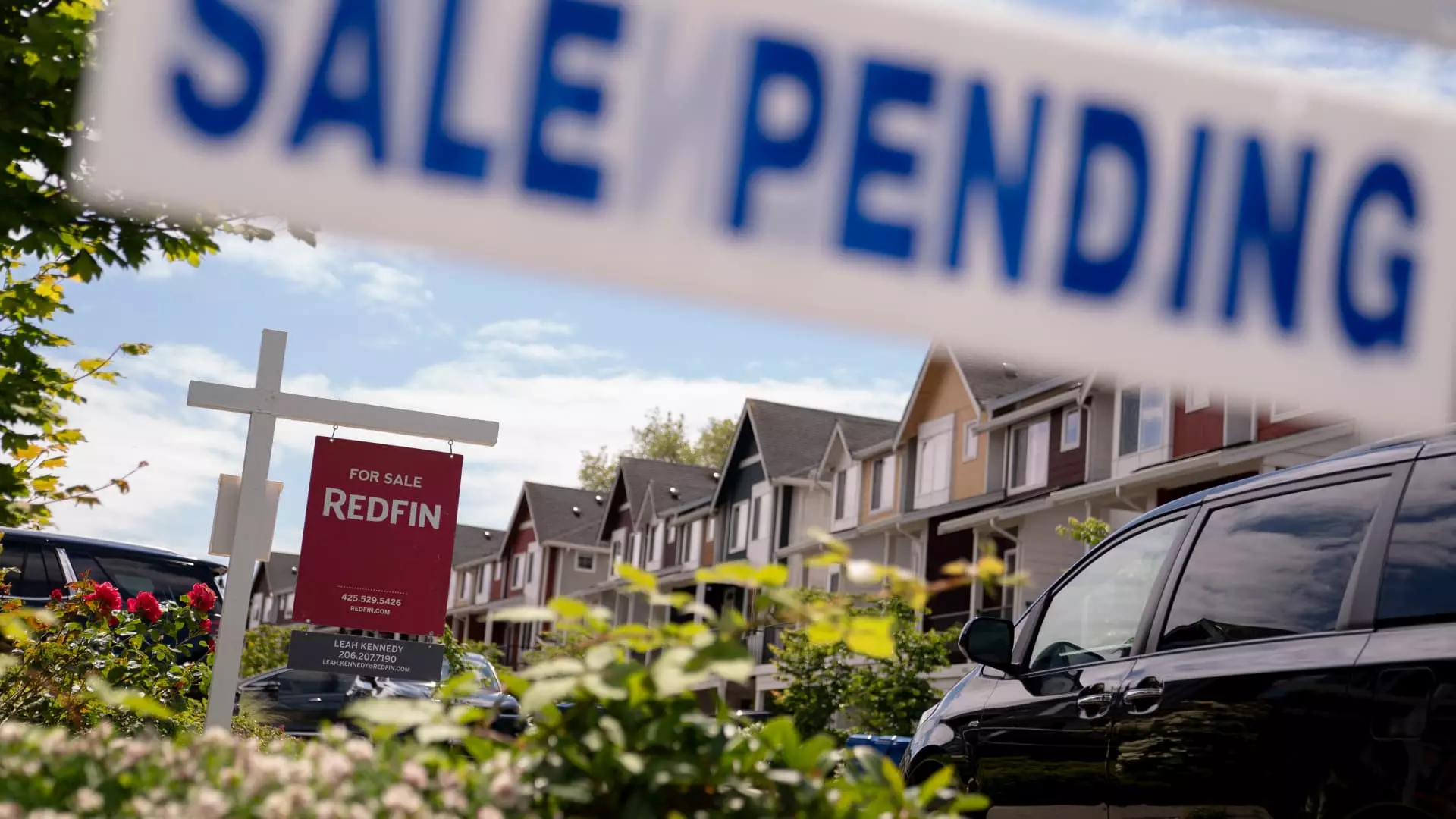The mortgage landscape in the United States has recently taken a drastic turn, with interest rates climbing to their highest point since February. This surge isn’t just a numbers game; it reflects an uneasy climate for potential homebuyers and those looking to refinance. As the Mortgage Bankers Association recently reported, total mortgage application volume plummeted by a whopping 8.5% in just one week. Such a drop signals more than mere adjustments; it indicates a market in distress. With the average interest rate on 30-year fixed mortgages now hovering at 6.81%, up from 6.61%, the implications for homeownership are dire.
What’s particularly concerning is the shift in buyer behavior. As mortgage rates climb, homebuyers are increasingly seeking alternative financing options, notably riskier adjustable-rate mortgages (ARMs). This newfound trend towards ARMs paints a disturbing portrait of a market where consumers feel pressured to prioritize lower initial rates over long-term stability.
Demand Versus Inventory: A Disturbing Disconnect
Despite a 5% decline in mortgage applications to purchase homes last week, current demand is still 13% higher than the same time last year. This strange disconnect can largely be attributed to an increase of around 30% in active inventory on the market compared to last year. You’d think that elevated supply would help quell price surges and foster a more favorable buying environment, yet that’s not happening. It seems the economic uncertainty and tumultuous interest rate fluctuations have turned potential buyers into cautious onlookers, hesitant to proceed amidst unclear market dynamics.
Realtor.com’s insights suggest an uncomfortable reality: buyers may still be eager, yet they are being held back by economic fears that weigh heavily on their minds. Home prices continue to climb, making purchasing a home—a cornerstone of the American Dream—feel increasingly out of reach.
The Allure of Adjustable Rates: A Dangerous Shortcut
More alarming than the simple statistics is the troubling trend of rising interest in ARMs. With initial fixed rates being offered closer to 6%, it’s no surprise that a significant uptick in ARM applications has occurred recently, peaking at the highest level since November last year. Borrowers, driven by the pressing need to mitigate their financial burden, seem to be ignoring the inherent risks involved with these types of loans. It’s a risky strategy that may offer temporary relief but could lead to catastrophic consequences down the line.
This transition towards riskier loans serves as a stark reminder that, in times of crisis, individuals often resort to desperate measures. While ARMs may offer an attractive introductory rate, the prospect of substantial increases after a fixed term ends can plunge borrowers into financial turmoil. This is particularly concerning for those with larger loans—often the most susceptible to sudden rate hikes.
The Refinance Dilemma: A Double-Edged Sword
The refinancing aspect of the mortgage market tells a contradictory tale. Although applications for refinancing dropped by 12% last week, they still remain an astonishing 68% higher than last year’s figures. This spike can be partially attributed to last year’s higher rates, which makes today’s offers look relatively appealing. However, one must consider whether locking in a rate now is a wise move when market volatility looms large.
Mortgage rates may show faint signs of easing, particularly with the relative calm in financial markets observed at the beginning of this week. Still, experts consistently warn that those in search of stability may not find long-term solace just yet. The environment remains precarious, and the faint whispers of lower rates could easily become a mirage if the current economic trends persist.
The reality is that we’ve entered an unpredictable chapter in the mortgage market, one where the rush for immediate gratification through lower rates risks overshadowing responsible long-term financial planning. As buyers and refinancers weigh their options, the question remains: will they prioritize safety or succumb to the compelling allure of temporary solutions?

